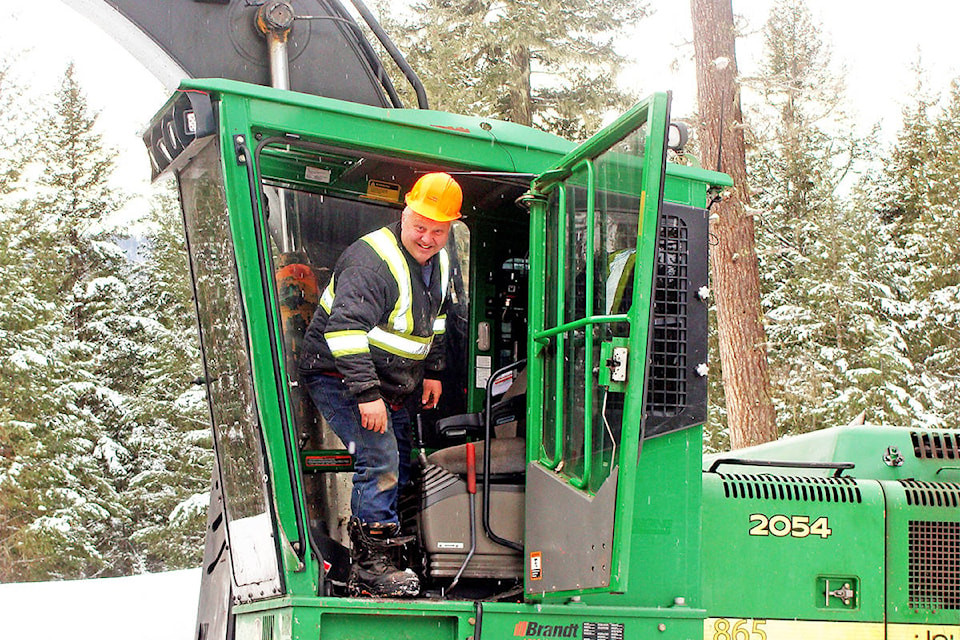By Jim Hilton
I have been looking for an opportunity to experiment in producing biochar from logging cull piles in the area around Williams Lake.
A number of people mentioned that there was a lot of logging activity in the Fox Mountain area with chip trucks heading into town.
As it turned out my neighbour Ron Kohnke was working on a fir bark beetle salvage contract around Fox Mountain as well.
For a number of reasons the residual logging piles were to be burned rather than chipped so it gave me the opportunity to observe the disposal process.
Ron comes from a family involved for many years with ranching and logging in the Williams Lake area. It has served him well in his present logging contractor business in which he plays a number of roles including road builder, feller buncher and grapple skidder operator, log processor and loader operator along with logging truck driver.
For safety concerns and production efficiency, he usually works with one other person which allows them to ship two or three loads a day to the mills if the haul distance is not too long.
In order to keep his overhead down he buys mostly good used logging equipment which he hopes won’t require too much in repairs and maintenance.
Read More: Forestry practices and mine reclamation in B.C.
Having extensive experience in the operation of all the equipment he owns helps in choosing the right kind of machines at the forest equipment auctions.
His experience also enables him to do most of the basic maintenance and repair and when to get help from experts because of the ever-evolving complexity of the equipment.
This fir salvage contract also has some extra problems in addition to cleaning up the slash piles for fire hazards.
In dealing with the logging debris at the processing site he has to make sure the logs that may still contain active fir beetles have been burned or, at least, charred enough to ensure there are no live beetles left under the bark. The logs which contain beetles are usually the larger diameter fir with thick bark which are more difficult to start burning and keep a fire going.
Trying to get the right mix of smaller, dryer logs to keep a sustained fire can be challenging.
Even with all that Ron has on his mind he was kind enough to let me sort through some burned piles to see how much biochar was available. One of our first burns did not leave much char behind because we were too late in trying to quench the burn, but most of the big logs had been either burned up or well charred. Cutting the large logs into shorter pieces would probably help shorten the burning time as well as resulting in a more complete burn but all of this adds to the log processing time.
Read More: Introduced species that haven’t become invasive
We have also discussed the idea of having smaller piles which may be more manageable and easier to control the burning intensity.
As with any new venture one of the challenges is how to encourage a local market for the product. Feedback from the users helps determine the best way to produce, package and distribute the end products.
Jim Hilton is a professional agrologist and forester who has lived and worked in the Cariboo Chilcotin for the past 40 years. Now retired, Hilton still volunteers his skills with local community forests organizations.
Do you have a comment about this story? email:
editor@wltribune.com
Like us on Facebook and follow us on Twitter.
